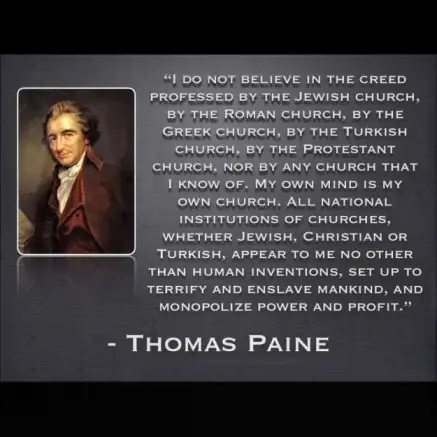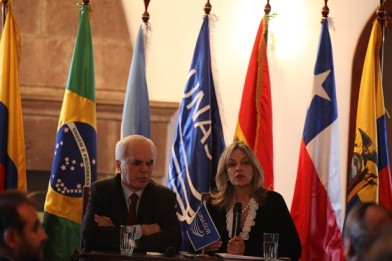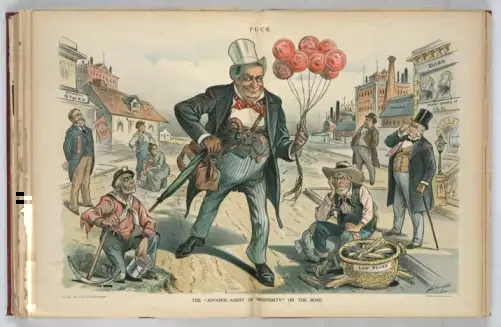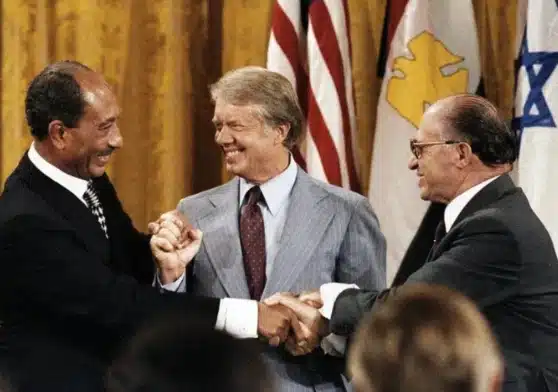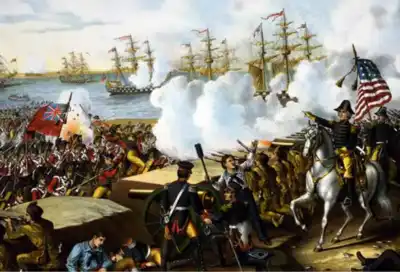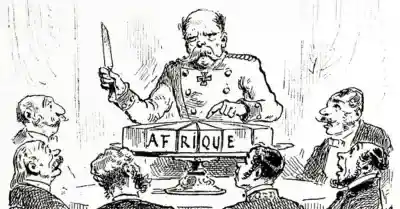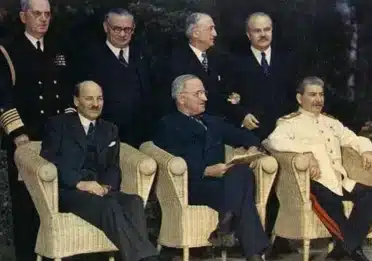Reagan’s Doctrine: A Blueprint for U.S. Foreign Policy in Pursuit of Democracy
The Reagan Doctrine was a significant foreign policy strategy of the United States during the presidency of Ronald Reagan, which spanned from 1981 to 1989. During the Cold War, the United States pursued a geopolitical strategic foreign policy known as containment.
This approach, initially outlined by George F. Kennan in 1947, aimed to limit the expansion of communism. The policy emphasized the need to prevent communism from spreading to neighboring countries by isolating and containing it.
Under the Reagan Doctrine, the United States openly and secretly supported anti-communist guerrillas and resistance movements. The goal was to challenge and weaken pro-communist governments supported by the Soviet Union in regions such as Africa, Asia, and Latin America.
The aim was to push back against Soviet influence and promote non-communist alternatives in those areas. In a 1985 speech, President Ronald Reagan urged Congress and the American people to resist the Soviet Union, which he had famously labeled the “Evil Empire.”
 |
| Ronald Reagan meets with Margaret Thatcher |
💻 Table of Contents:
- The Reagan Doctrine: A Response to the Cold War’s Global Struggle
- Key Principles of the Reagan Doctrine: Promoting Democracy
- Implementation of the Reagan Doctrine
- Reagan’s Doctrine: Advancing U.S. Foreign Policy Through Democracy
President Ronald Reagan’s foreign policy diverged from the “Containment” doctrine established under Harry S. Truman. Instead, Reagan adopted a strategy called “Roll-Back,” inspired by John Foster Dulles in the 1950s. This approach involved actively pushing back against Soviet influence. However, Reagan’s policy stood out by primarily relying on openly supporting those opposing Soviet dominance. In this article, we will explore the origins, key principles, implementation, and the lasting legacy of the Reagan Doctrine.
The Reagan Doctrine: A Response to the Cold War’s Global Struggle
The Reagan Doctrine emerged in a specific historical context defined by the protracted conflict between the United States and the Soviet Union known as the Cold War. It was a time of ideological and geopolitical rivalry, characterized by a struggle for influence between the two superpowers and their respective allies.
The Cold War was a lengthy and tense period in history that commenced after World War II, around 1947, and extended until 1991. It wasn’t a “hot” war with battles, but rather a time of
conflict and rivalry between two superpowers: the United States and the Soviet Union. These two countries held distinct ideologies regarding governance and their desired global order.
Throughout the Cold War, there existed a considerable amount of mistrust and competition between the United States and the Soviet Union. Both nations sought to establish themselves as the preeminent power and exert influence over other countries. They bolstered their military forces and developed formidable weapons, including nuclear bombs, to showcase their might.
 |
| Chinese Leaders Meeting with President Ronald Reagan |
This rivalry had repercussions for numerous other countries as well. Some nations aligned themselves with the United States, while others joined forces with the Soviet Union. Multiple crises and conflicts emerged, such as the Cuban Missile Crisis in 1962.
The Cold War eventually concluded in 1991 with the dissolution of the Soviet Union. This marked a significant global transformation as it signaled the end of the rivalry and tension between the two superpowers. It was a time of relief and optimism for a more peaceful world.
The origins of the Reagan Doctrine can be traced to the late 1970s, a period when U.S.-Soviet relations were declining. Several critical events, such as the Soviet invasion of Afghanistan in 1979 and the Sandinista revolution in Nicaragua, raised alarm within the Reagan administration.
These developments underscored the need for a more assertive U.S. response to counter the global expansion of communism.
Key Principles of the Reagan Doctrine: Promoting Democracy
The Reagan Doctrine, a foreign policy strategy implemented during Ronald Reagan’s presidency, encompassed several key principles. This doctrine aimed to confront and contain the Soviet Union’s influence by supporting anti-communist forces around the world. It emphasized promoting democracy, human rights, and free-market economies while opposing communist regimes.
 |
| President Reagan and Queen Elizabeth II |
The Reagan Doctrine also emphasized military strength, including a buildup of defense capabilities, to deter Soviet aggression. By championing these principles, Reagan sought to advance American interests and challenge the Soviet Union’s global dominance.
Active Backing for Anti-Communist Movements:
The heart of the Reagan Doctrine lay in openly and secretly supporting groups, rebels, and governments opposing communism’s spread in regions where it gained influence. The United States aimed to empower these entities in their struggles against communist or Soviet-backed regimes.
Rolling Back Soviet Influence:
Unlike the containment policy of the past, the Reagan Doctrine did not settle for limiting communism’s expansion; it aimed to actively reverse Soviet gains and reinstate democratic, pro-Western governments. This marked a significant departure from the prior strategy.
Championing Democracy and Human Rights:
A fundamental tenet of the Reagan Doctrine was the strong emphasis on promoting democracy, individual freedoms, and human rights. The goal was to replace authoritarian communist regimes with governments that respected these principles. This reflected Reagan’s belief in the universal appeal of democracy and his moral opposition to totalitarianism.
A Comprehensive Approach:
The Reagan Doctrine employed a multi-pronged strategy, incorporating both economic and military support. The United States provided assistance, including military aid, training, and financial resources, to fortify anti-communist forces. These principles formed the bedrock of the Reagan Doctrine, guiding its efforts to counter communist influence and promote freedom and democracy on the world stage.
 |
| President Regan with President Suharto |
💻 You May Also Like:
- The Cold War: Collapse of Soviet’s Communist Empire & American Triumph
- The Rise and Fall of the Iron Curtain: A Divided Europe
Implementation of the Reagan Doctrine:
The Reagan Doctrine was implemented through a combination of covert and overt actions, diplomatic initiatives, and economic support. Several key examples illustrate its application in various regions:
Afghanistan:
The Soviet invasion of Afghanistan in 1979 marked a significant turning point in the Cold War. The support for the Afghan Mujahideen was a central element of the Reagan Doctrine’s efforts to push back Soviet influence. Over the years, this assistance significantly weakened the Soviet position in Afghanistan, leading to immense economic and human costs for the Soviet Union.
The Soviet forces ultimately withdrew from Afghanistan in 1989, marking a significant victory for the Reagan Doctrine’s proactive approach in countering Soviet expansionism and supporting anti-communist movements.
In Central America during the 1980s, the Reagan administration supported anti-communist forces as part of the broader implementation of the Reagan Doctrine.
Nicaragua:
In Nicaragua, the U.S. backed the Contras, short for “counter-revolutionaries,” who were fighting against the Sandinista government, a leftist regime with ties to the Soviet Union. U.S. aid to the Contras included financial support, weapons, and training. The goal was to challenge the spread of communism and promote a pro-Western, democratic government in Nicaragua.
El Salvador:
In El Salvador, the U.S. supported anti-Sandinista movements. These groups opposed communist influences and sought to establish pro-Western, democratic governments. U.S. aid in El Salvador aimed to counter the spread of communism in the region.
The Reagan administration’s involvement in Central America was driven by the desire to contain the influence of communism and promote governments aligned with U.S. interests. However, these actions were also met with controversy and criticism due to their complex and often turbulent consequences in the region.
 |
Southern Africa:
The Reagan Doctrine also had an impact in Angola and Mozambique during the 1980s. In both countries, there were civil wars with communist-backed governments fighting against anti-communist rebel groups. The Reagan administration provided support, including financial aid and training, to these anti-communist rebels, aiming to counter Soviet-backed regimes and Soviet influence in the region.
In Angola, the U.S. supported the National Union for the Total Independence of Angola (UNITA), led by Jonas Savimbi, in their fight against the Marxist government supported by the Soviet Union and Cuba. In Mozambique, the U.S. supported the Mozambican National Resistance (RENAMO) in their struggle against the communist government.
The Reagan Doctrine’s goal in Angola and Mozambique was to roll back communist influence and promote pro-Western, anti-communist forces. While the impact of U.S. involvement was complex and controversial, it reflected the doctrine’s active approach in countering Soviet expansion.
The Reagan Doctrine had also a notable impact in South Africa during the 1980s. The policy aimed to counter Soviet influence and support anti-communist movements worldwide. In the context of South Africa, the Reagan administration resisted increasing calls for sanctions and instead pursued a policy of “constructive engagement.” This policy sought to influence the South African government to end apartheid and negotiate with the African National Congress (ANC), led by Nelson Mandela.
Poland:
Lech Walesa, who founded the Solidarity movement in Poland, credited Ronald Reagan with playing a crucial role in bringing liberty to Poland and Eastern Europe. The impact of Ronald Reagan’s actions and the success of the Reagan Doctrine were not only felt by Poland and Eastern Europe, but by the millions of people living in those countries behind the Iron Curtain.
In simpler terms, Reagan’s actions helped bring freedom to Poland and Eastern Europe. He also played a part in ending the Cold War and bringing down the Soviet Union, without needing to fight a war. The ideology of communism lost its influence, making way for a new era.
Reagan’s Doctrine: Advancing U.S. Foreign Policy Through Democracy
The Reagan Doctrine had a significant impact on the Cold War and the world stage. It intensified tensions between the superpowers, as it directly confronted Soviet influence and put strain on the Soviet Union’s military and economy. By prioritizing democracy and human rights, the doctrine’s influence extended beyond the Cold War, shaping the promotion of democratic values globally.
It set a precedent for future U.S. foreign policy, emphasizing proactive strategies, supporting allies, and addressing global challenges, especially in regions governed by authoritarian regimes. The Reagan Doctrine’s enduring legacy provided a blueprint for navigating international affairs with a focus on freedom and democratic principles.
Conclusion:
The Reagan Doctrine was a pivotal geopolitical strategic foreign plan during the Reagan administration, representing a proactive response to the challenges posed by the spread of communism and Soviet influence. Rooted in principles of supporting anti-communist movements, rolling back Soviet gains, and promoting democracy and human rights, the doctrine had a profound impact on the global stage.
Its multifaceted approach, combining military, diplomatic, and economic elements, showcased the United States’ commitment to freedom and its determination to contest Soviet expansion. The doctrine’s legacy endures as a blueprint for U.S. foreign policy in addressing complex international challenges and promoting democratic values.
When Reagan finished his presidency in January 1989, the goals of the Reagan Doctrine had been accomplished. The Cold War ended peacefully, the Soviet empire collapsed, and the ideology of Marxism-Leninism was no longer dominant. These achievements were significant, considering they were accomplished without resorting to military conflict.


